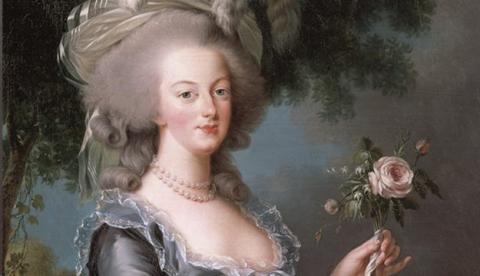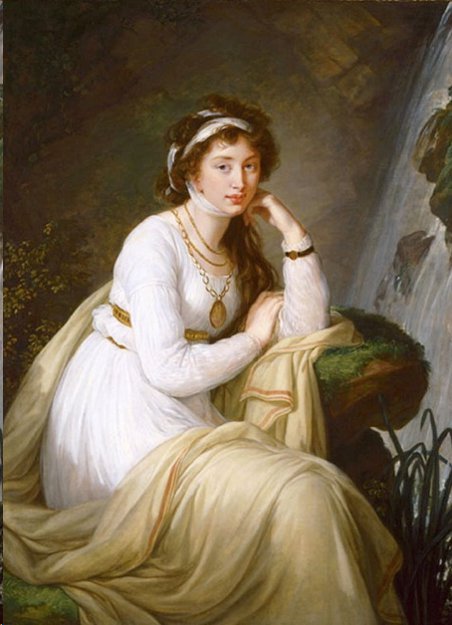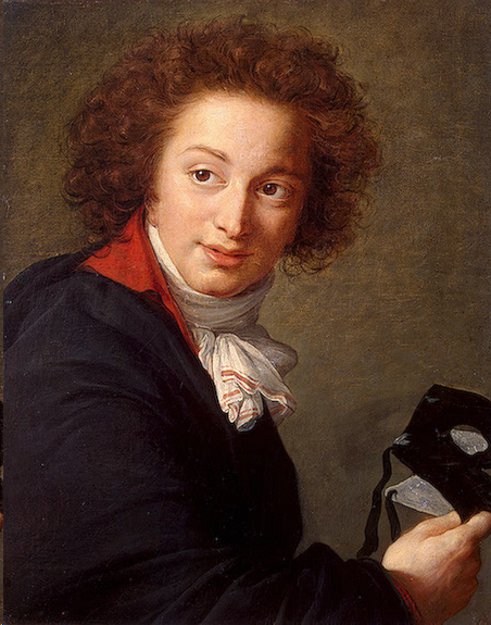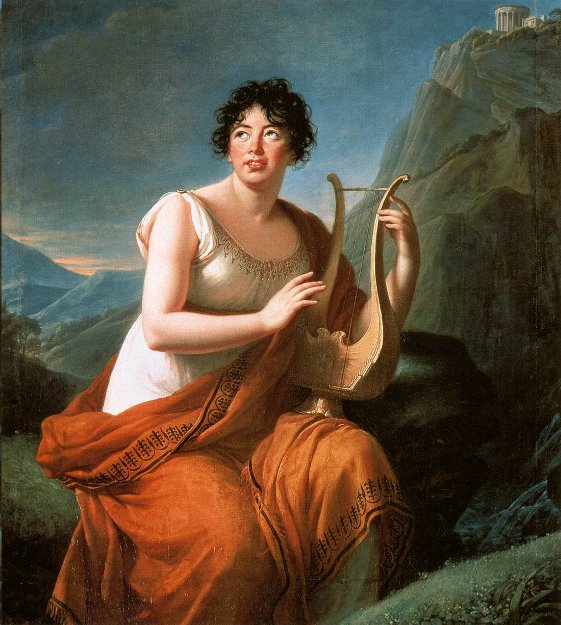French Revolutionary Artist Vigee Le Brun Reigns Supreme at the Met

Though she was Marie Antoinette’s favorite portrait painter, Elisabeth Louise Vigee Le Brun (1755-1842) was not a queen herself. She was, however, an extraordinarily gifted artist. Beautiful, witty, unassuming and largely self-taught, she is arguably the finest of 18th century French portrait painters and to her credit—through a long and illustrious career—she kept her head.
The Metropolitan Museum of Art’s current exhibit, Vigee Le Brun: Woman Artist in Revolutionary France, fast on the heels of its showing at the Grand Palais in Paris, is long overdue. Katherine Baetjer, Curator in the Department of European Paintings, remarked to Roberta Smith in the New York Times’ own coverage, that it was the first time in her 40 years in the Department that a monographic exhibition has been held for a woman artist. Better late than never, this first time retrospective of 79 portraits and one landscape will leave little doubt that the viewer is in the presence of true genius.
Vigee was the daughter of an accomplished pastel portraitist, who helped to guide her precocious talents. It was a lucky stroke, for when he died when she was only 12 years of age, she was quick to contribute to the family’s support. Upon first entering the exhibit, a trio of family portraits reveals a remarkable sensitivity toward her sitter. The portrait of her mother shows a trusting, genteel fatigue, while the brother is confident, totally at ease with his school book and tri-cornered hat. Even her stepfather, an ambitious playwright whom she suspected of hoarding her income, exhibits a benignly relaxed countenance. By 19, she was exhibiting publicly and two years later, married to Jean Baptiste Pierre Le Brun, the principal art dealer in 18th century Paris. It’s interesting to note the dealer’s self-portrait included here, proudly posed with an artist’s palette, appearing every bit the artistic dandy of his day.

Though the marriage was beneficial to both, producing one daughter, Vigee Le Brun was denied access to the prestigious Academie royale due to her husband’s profession as a dealer. Such association with the trade was strictly prohibited. It was only through the intervention of Marie Antoinette and Louis XVI that the painter was allowed access, and a large, symbolic canvas, Peace Bringing Back Abundance, was her reception piece in the 1783 salon. It’s an eye-catching example of her mastery of the female form, the figure of abundance greets the viewer with exposed breast and a cornucopia of fruit placed nearby. But the figure of Peace hovering overhead with a dramatic sweep of emerald green cape gives a feeling of high drama to the whole composition.
Not surprisingly, some of the biggest crowd-pleasers are the three life-size portraits of Marie Antoinette. The first to greet visitors, Marie Antoinette in Court Dress, was the result of the Queen’s summoning of the young 23-year-old artist to Versailles. It was specifically commissioned for the queen’s mother, Empress Marie Theresa of Austria who wanted to see her daughter in royal splendor. The portrait is predictably grand, with a perfect mastery of attitude and dress in every stroke. In all of the portraits, the subject exhibits the Hapsburg trait of a long narrow face and full lower lip, yet the painter was impressed with the queen’s carriage and said that “she walked better than any other woman in France.”
More intriguing are the paired portraits of the queen shown together for the first time—one in a simple pastoral setting wearing a white muslin frock and the other a corseted formal portrait, more befitting her role. It’s hard to imagine today the scandal and uproar the informal portrait created—the pose is practically identical—but it was soon removed from display. (A trip to Versailles for any visitor curious about daily life for the royal inhabitants must include a train ride to Le Petit Trianon, the farm created for the queen in her role as shepherdess.)

One of Vigee Le Brun’s favorite poses for her aristocratic sitters was an over-the-shoulder glance at the viewer, a pose ideal for projecting a moment frozen in time. One such example is the fetching Baronne de Crussol Florensac (1785) interrupted in her studies of a musical score. It’s easy to imagine in a great many of these portraits that painter and subject were in the throes of sharing an intimate and joyful afternoon together. Was it the artist’s intent or the ebullient nature of her subject? She once admitted that “I painted them as dreamers and nonchalantly intent.”
The only portrait that stands out in obvious contrast is one depicting the writer Madame de Stael. Painted in the guise of Corinne, one of her more famous literary creations, it’s perhaps the only singularly unflattering portrait in the exhibit—an open mouthed, toothy impression, looking heavenward with lyre in hand, it’s an effectively eye-catching rendering but one rejected by the author.
Vigee Le Burn also exhibited a talent for self-portraiture not easy to achieve, even for the most adept. My favorite on display, Self Portrait with Cerise Ribbons (1782) is a beautiful study of a young woman, confident in her grace and intelligence, yet exhibiting an unaffected openness. She has chosen the contrasts of red and black hues, the black hat setting off the luminous face, the drop earring a perfect point of focus.

She could be just as adept in her portrayal of children and not to be missed is a charming portrait of her daughter Julie. The subject is in profile, holding an angled mirror with her reflection seen in full-face. It’s not only a totally captivating portrait but one that shows the great love and trust she must have shared with the child.
A major showstopper is surely Marie Antoinette and her Children (1787). It’s a grand majestic painting, with the queen surrounded by her brood in a powerful, triangular composition. Never one to forego a helpful suggestion, the painter had sought out Jacques Louis David’s advice at the outset. The image of the young Dauphin pointing to an empty crib in the background is bittersweet, perhaps referring to the youngest offspring who had died at 11 months.
Such a close association with the queen forced Vigee Le Brun in 1789 to flee France. While violence raged in her home country, she was quickly embraced by those who could afford her talents. Traveling to Italy with daughter Julie, she was elected to membership in the Accademia di San Luca in Rome. While she often worked independently, she was commissioned by the queen of Naples whose daughter Maria Louisa is on view. Napoleon’s sister Caroline was a sitter as were several of the royalty in Vienna. One of her most successful sojourns was the six years she spent in Russia where the family of Catherine the Great was only too happy to take advantage of her artistry.
The glitter and glamour of Russian society was obviously to her liking. A portrait of the Countess Varvara Nikolayevna Golovina dramatically clutching her red stole against the cold, has an unmistakable boldness. Likewise, a portrait of the young Tolstoy, draped in a rich crimson cape against a bare background, benefits from the singular focus on its subject. The male subject hardly received short-shrift from the painter and a vibrant and powerful portrait of Stanislaw August Poniatowski, formerly King of Poland, attests to this fact.
There are additional delights in this sumptuous exhibit worth mentioning. The only landscape, The Festival of the Shepherds at Unspunnese, was painted near Interlaken, Switzerland and a careful look will reveal the artist with her sketchbook in the foreground. A series of pastels includes a sketchy self-portrait in broad brimmed hat and curls reminiscent of Boticelli’s mythical beauties.
Vigee Le Brun would enjoy 40 more productive years upon her return to France, giving a detailed account of art and life in post-revolutionary Europe in her journals. If international recognition for this major artist has been slow in arriving, the Met’s impeccable exhibit is well worth the wait. The Musee National des Chateaux de Versailles et de Trianon, the Kunsthistorisches Museum in Vienna, the Musee du Louvre and Her Majesty Queen Elizabeth II are also responsible in no small measure for its success.
The exhibition is on view through May 15, 2016.
Author Bio:
Sandra Bertrand is Highbrow Magazine’s chief art critic.
For Highbrow Magazine





























































































































































































































































































































